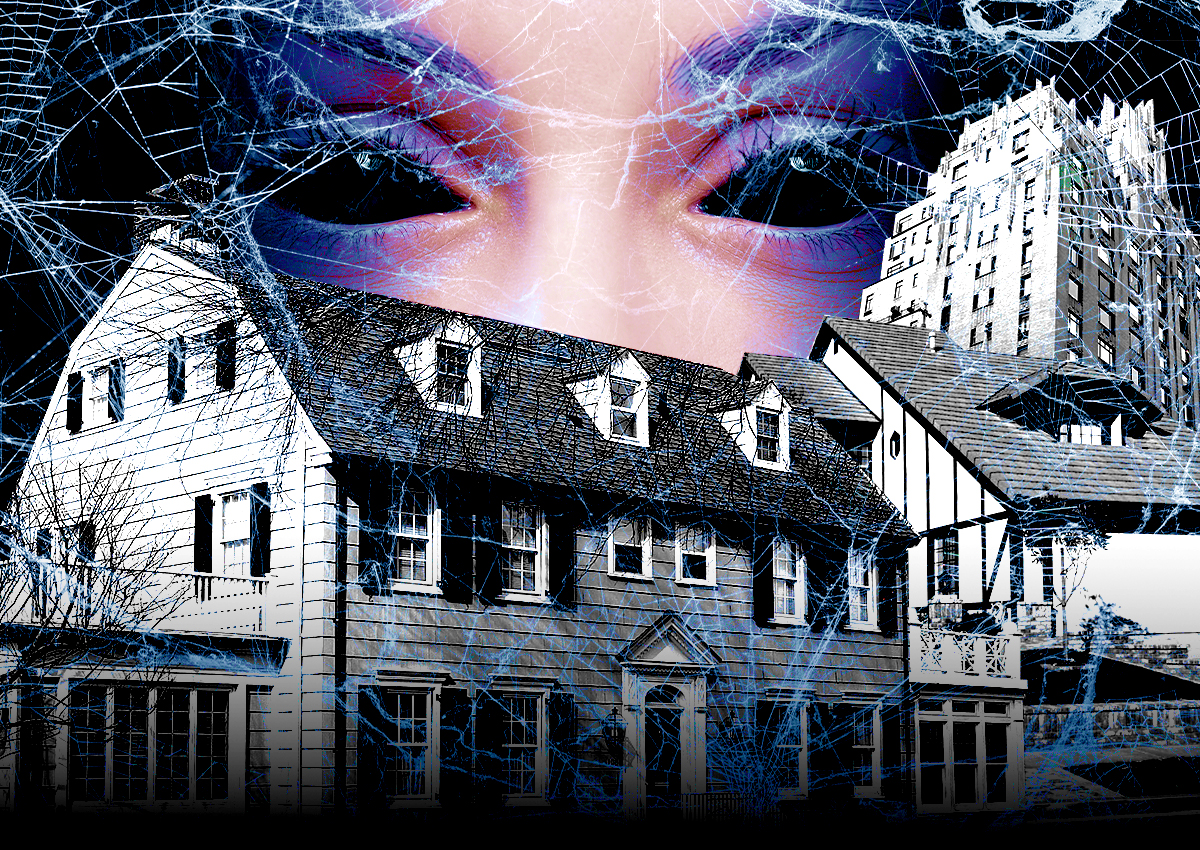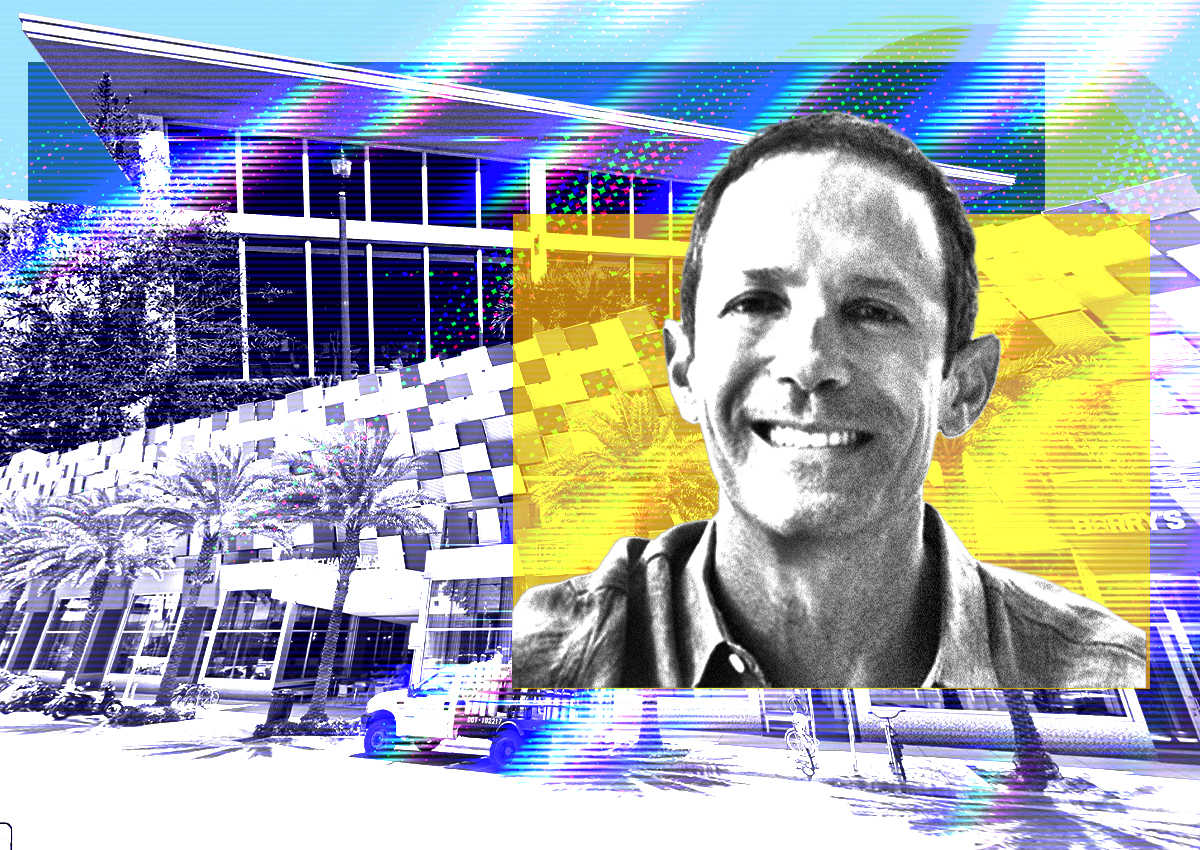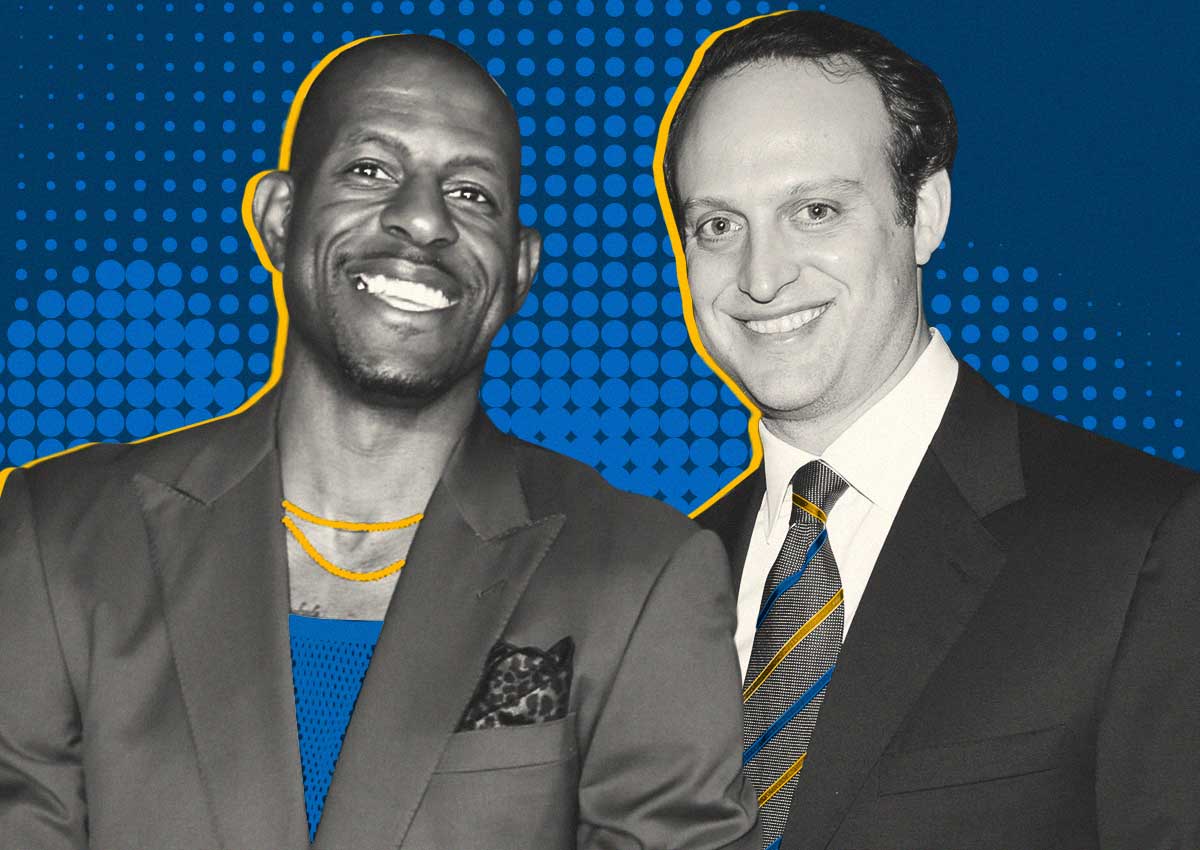
With Halloween just a few days away, America’s fascination with spooky and haunted houses is in peak season.
Film has certainly played a role in that enchantment, where homes are often characters, and even antagonists.
Many times, the actual homes featured on the big screen find their way to the market and don’t have a problem selling. After all, they were just film sets … right? But the fictional homes may have you asking questions like: Who would buy this? How much would it cost? How would you market this?
And despite high interest rates, it’s still a seller’s market with a major inventory shortage, so even someone who isn’t a horror cinefile may consider such terrifying abodes.
So instead of just asking ourselves these questions, we checked in with brokers from around the country to give us their thoughts on how they would handle such frightful listings.
“The Amityville Horror” (112 [formerly 108] Ocean Avenue, Amityville, New York)
The mother of all haunted houses, this 1927 Dutch Colonial is infamous for Ronald DeFeo Jr. killing six family members in it in real life. That and subsequent events spawned nine books and nearly 50 films, some more well-known than others.
What it would go for without controversy $1 million to $1.3 million
Nicholas Campasano and Ricardo Pena of The Agency said the home would easily fetch that price given the square footage, the boathouse (which typically can’t be built any more in that area of Long Island due to the environmental regulations), the two car garage, finished basement and location in Amityville.
“It’s a high-demand area; you don’t see a lot of turnover there,” Campasano said.
“Amityville is a tight-knit community, it dates back to summer cottages, and dignitaries would come and summer there. That’s how it got started. If you’re not from there, you know it right away. They know who their neighbors are. It’s a beautiful community, really.”
So residents must love all the attention, right?
“They hate it,” Campasano said.
What it would go for if it were haunted: 5% to 30% off
“If you walked in the house and heard voices say, ‘Get out,’ that would affect the value,” Campasano said. “After the murder, it took 15 months for the house to actually sell. It did sit for a while. But it does go to show you that obviously there’s a buyer for every property. Even after everything that happened, the house still did sell.”
How to market it
Pena said selling a haunted Amityville Horror home would call for unconventional methods.
“You’d have to go through different buyers, make sure you have it at trade shows and forums and paranormal enthusiasts,” he said. “You make sure the property is in front of those eyes, because that’s who it’s going to be most appealing to. Anyone else might think that’s a bad thing. They may find it amazing.
“You should definitely lean into it. Host an open house at night, so buyers come in and see nothing is creaking and squeaking. It’s a good way to get buyers to get comfortable. Maybe put up a sign, ‘We already spoke to the ghosts. We’re doing our best to work with ghosts.’ They want owners to haunt, too. Ghosts get bored, too.”
Campasano said there is definitely a market for the home.
“The original address was 112 and the town went so far as to change it to 108, because so many people that were fans of the books and the movies were coming by to take pictures and see the house,” he said. “There is a tremendous amount of interest in the house and the property itself.”
One way to further lean in, Campasano said, is to rename the property like they used to in the area years ago. In 1925, the owner of the home renamed it “High Hopes,” Campasano said.
“It’s ironic, perhaps, but play into it and rename it,” he said. “Higher Hopes, maybe, and put the name over the door”
“Poltergeist” (4267 Roxbury Street, Simi Valley, California)
The 2,400-square-foot house, which sits on a 0.37-acre lot, featured in one of the scariest and most iconic movies from the 1980s. The film, which centered on a little girl being kidnapped through a television by malevolent spirits, was set in a fictional development in Southern California. But the home is in Simi Valley.
What it would go for without controversy $820,000
Broker Tim Gavin, based in Beverly Hills, said the four-bedroom, three-bathroom home is typical for the area. …. … Or is it?
What would it go for if haunted $950,000
Taking the road less traveled, Gavin said he’d be able to fetch top dollar for a home that has nightmarish toy clowns and is built on an old Native American burial ground.
How he would market it
“Real estate is a seasonal business,” Gavin said. “If we are in the Halloween time of the year, we’re gonna bump that price up to about $950,000 with all the freaks that are enamored by the legacy films like ‘Poltergeist,’ so they’re going to have to pay that premium value. And of course the TV comes with the home. That sticks to the property and that is an added value.”
Gavin also is unconcerned about that burial ground.
“Nah, we’ll go ahead and disclose that. Everything is in the disclosure,” he said. “It’s not for everybody. But you have to build a narrative for those it appeals to, and when you have that narrative, people will see it as value.
“We’re talking about the freaks here. This is a legacy property. This is a trophy property. These don’t come up often. If you want it, you’re going to have to pay a premium, you sicko.”
The TV stays, but, whatever you do, don’t highlight the schools.
“It’s really a starter home,” Gavin said, dancing around the uncomfortable truth that a child or two might go missing should they move in. “I wouldn’t say this is a home for a family, even though it is four bedrooms. But I would say it’s for a couple.”
“Oh, and there is attic space in the house, but we don’t recommend you go in there.”
“Ghostbusters” (55 Central Park West, NYC)
OK, OK, you could argue it’s not a horror flick, but it’s also not entirely a comedy, either, what with Ray Parker Jr. trying to convince himself he “ain’t afraid of no ghost” in the theme song. It’s also one of several films that combines the paranormal and a New York high-rise.
We enlisted broker Amelia Gewirtz of Brown, Harris, Stevens Upper West Side to take a stab at this one. Gewirtz has as good a credentials as anyone to weigh in. In addition to being a lifelong New Yorker and broker with more than 30 years of experience, she also appeared on the soundtrack to the 2002 horror movie “Wishmaster 4” as a member of her band Amelia’s Dream.
What it would go for without controversy Gewirtz said a standard, one-bedroom unit on the 12th floor recently sold for $1.3 million.
What would it go for if haunted Unclear. Maybe more, maybe less. That’s New York City, baby.
“There might be people they want money off, like with ‘The Amityville Horror,’” Gewirtz said. “It took forever for them to sell that. So there might be people you might take the money off, but there might be people who might pay more for it. It’s New York. It’s a different kind of place. We have our eccentric people, maybe it would go to a bidding war.”
How she would market it
“I would market it, ‘Someone might pay more for free housekeeping, because the ghosts move the furniture for you.’ … ‘Who needs cable? Free entertainment with paranormal activity.’ … Maybe, ‘Fast commute from room to room, move through walls with ease.’ You could say, ‘If a personality inhabits you, you’ll never be bored or alone.’”
There is no Dana, only Zuul … and her trusty real estate broker going the extra mile for her client.
“Rosemary’s Baby” (The Bramford, a fictional building modeled after The Dakota, 1 West 72nd Street, New York City)
A real estate agent showing a classic Upper West Side apartment to a young married couple sets the scene of this 1967 horror show. It’s not haunted, but it turns out their building is chock full of malevolent (is there any other kind?) Satan worshipers, but it has a laundry room. How cheap does the rent have to be to tolerate giving birth to the antichrist?
What a unit would sell for without controversy About $2 million for a one-bedroom, $4 million for a two-bedroom.
What a unit would sell for if the neighbors belonged to a satanic cult trying to have you impregnated with the son of the devil Knock off about 20 percent
If your neighbors are devil worshippers, it’s time to party, Gewirtz said.
“You get a DJ in there and you make it a fun night,” Gewirtz quipped before adding, “I have had people purchase apartments from me that are religious and have had meetings in their apartments, but I’ve never heard a neighbor complain.
“I think if we had crazy devil worshippers next door, again, I would lean into it with the marketing. But it could lead to bidding wars because it is New York City and it is eccentric.
She also joked that the low inventory means buyers have to maybe compromise, even if that means raising Old Scratch’s progeny.
“You’ve got to be flexible and bend a little bit. Just let it go,” she said with a laugh.
Gewirtz, incidentally, knows of what she speaks, having sold a property next door to a neighbor far more disruptive than a coven of devil worshippers: a Columbia University fraternity.
During the showing, the brothers were in the adjacent garden chugging an alcoholic concoction out of gallon-size containers, Gewirtz said.
“The kids started chanting, ‘Buy the house, buy the house!’ They were ‘Animal House’ in real life. I told the client, ‘Well, see, you can use it as a rental and [the tenants] would have friends.”
Even with the encounter, or because of it, the client bought the property close to the asking price, Gewirtz said.
“He wanted to make the deal,” she said. “I could put my head on the pillow, even though I’m a seller’s advocate. I said to the seller, ‘He will sign the contract.’”
“Beetlejuice” (White River, Connecticut. Substituted for Kent)
Tim Burton’s anarchic “ghost with the most” turned haunting into an art form in 1988 and became a part of the zeitgeist. Capitalizing on the white-hot success of the original, Burton and star Michael Keaton immediately set about making a sequel that’s set to be released in September 2024.
Anyway, the gothic home where the original is staged doesn’t really exist — facades were used and the exterior shots were filmed in Vermont. But real estate agent Carole King of Keller Williams
How much would it cost without controversy $450,000
King said it’s an interesting four-bedroom, four-bathroom home with an attic and chef’s kitchen set on three acres. But it wouldn’t likely sell for more than that.
How much would it cost if really haunted $450,000
This is where King deviated from her colleagues. She said she would not play with the listing at all.
“I wouldn’t know if it’s the seller’s imagination. How do I know unless I saw it myself?” Kind said. “In Connecticut, you don’t have to disclose paranormal activity. If I put ‘haunted house’ on the listing, the only person who would buy it is someone in the market, and who craves buying haunted houses. Otherwise it wouldn’t sell.”
King brings up an interesting point about disclosures.
A handful of states have laws on the books concerning disclosures of paranormal activity in the sale of real estate. New Jersey requires that the seller disclose known info if the buyer asks.
New York has case law that says a sale will be rescinded if the seller takes unfair advantage of buyer’s ignorance as to the house’s reputation of paranormal activity; and the seller creates and perpetuates that reputation, according to Zillow.
Minnesota and Massachusetts have laws that say there is no duty to disclose paranormal activity, protecting sellers and agents.







